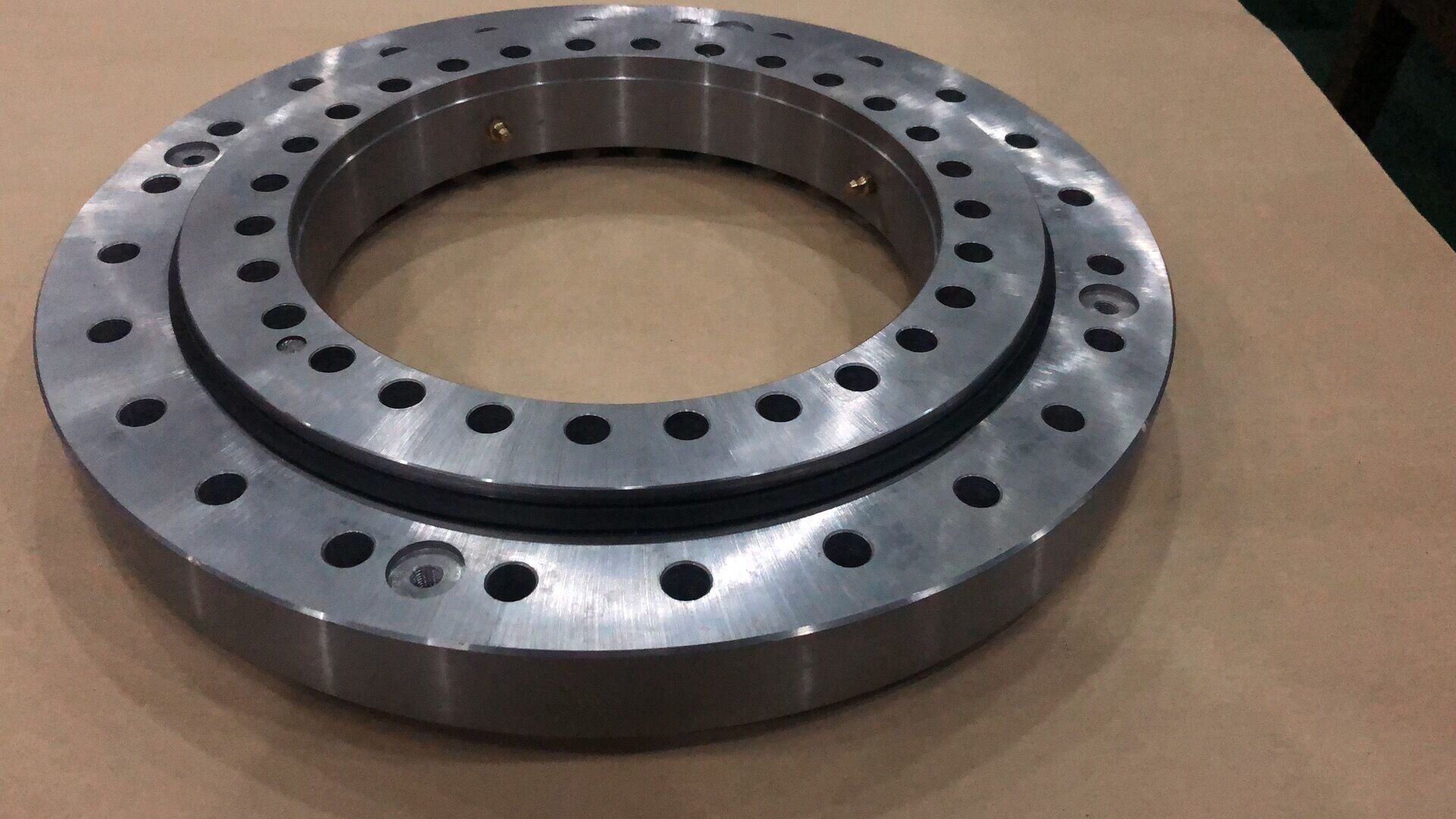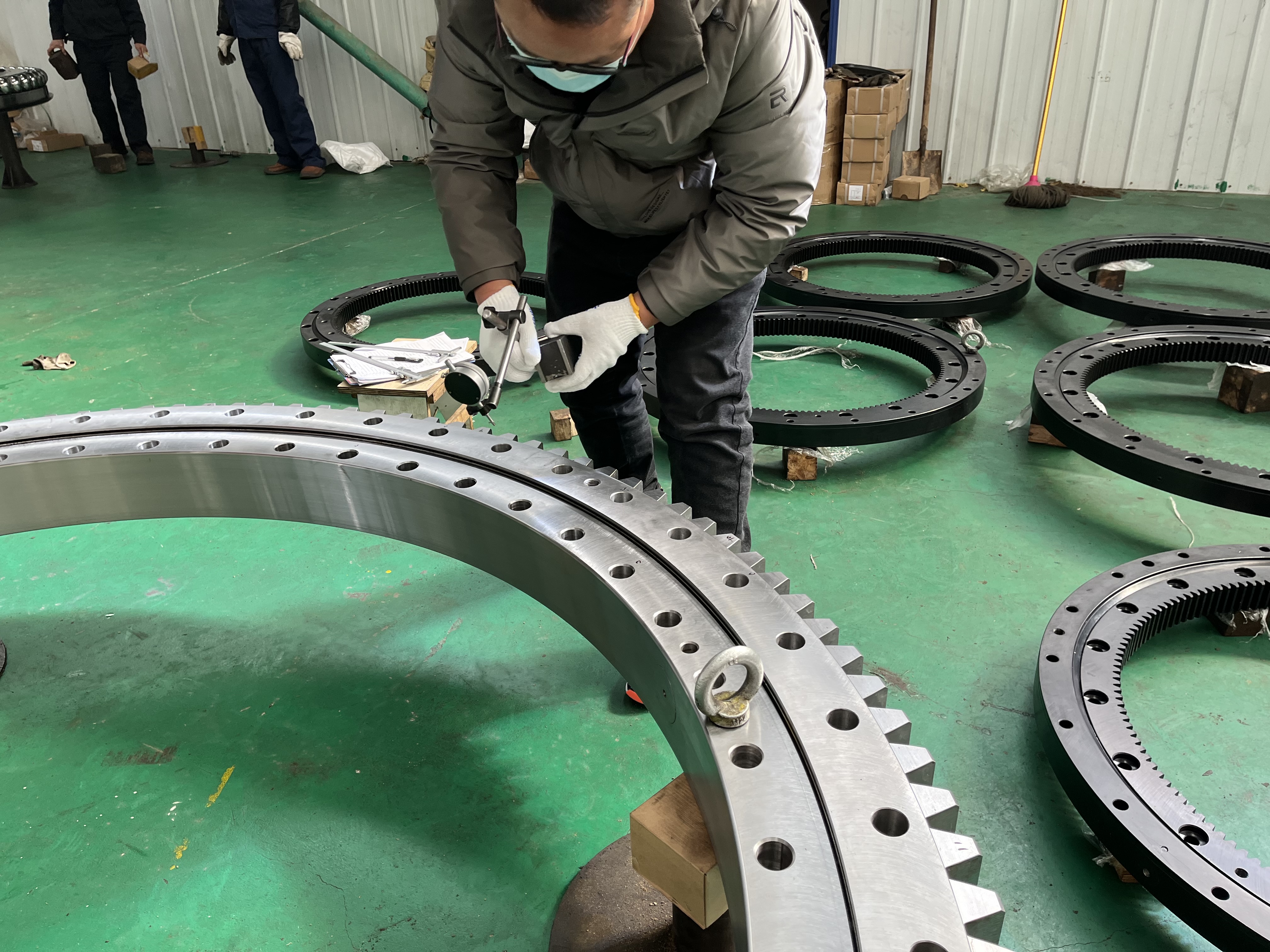Newsroom
What are the characteristics of slewing bearings?
2025-02-24Slewing bearings have a variety of remarkable characteristics, which make them widely used in various medium and large-sized slewing devices. The following are the main characteristics of slewing bearings:
1.High load-bearing capacity:
Slewing bearings are designed to withstand large axial loads, radial loads, and combined loads such as overturning moments. Their structure is robust, enabling them to withstand heavy loads and complex mechanical environments. 
2.Compact structure and easy installation:
The structure of slewing bearings is designed to be compact, which not only reduces the requirement for installation space but also simplifies the installation process. It is usually equipped with installation holes and positioning structures, making it convenient to integrate with mechanical equipment.
3.Smooth rotation and high precision:
Since slewing bearings use rolling elements (such as steel balls or rollers) to achieve movement, their rotation is very smooth, reducing friction and vibration. This helps to improve the operation precision and stability of mechanical devices.
4.Long service life and low maintenance:
Slewing bearings are usually made of high-quality materials and advanced manufacturing processes, so they have high wear resistance and corrosion resistance. At the same time, their sealing devices and lubrication systems also effectively extend the service life and reduce maintenance costs.
5.Multi-directional load-bearing:
Slewing bearings can not only bear loads in a single direction but also bear loads in multiple directions simultaneously, including axial, radial, and overturning moments. This multi-directional load-bearing capacity enables slewing bearings to have excellent performance under complex working conditions.
6.Good self-aligning function:
Slewing bearings have a certain self-aligning function. That is, when the bearing is tilted or deflected, it can automatically adjust the position of the rolling elements to maintain a stable operating state. This characteristic helps to reduce the additional loads and wear caused by installation errors or vibrations during operation.
7.Multiple configurations and models:
There are multiple configurations and models of slewing bearings available for selection to meet the needs of different mechanical equipment and working conditions. For example, according to the different rolling elements, they can be divided into ball type and roller type; according to the different installation methods, they can be divided into integral type and split type, etc. 
With their characteristics such as high load-bearing capacity, compact structure, smooth rotation, long service life, low maintenance, multi-directional load-bearing, and self-aligning function, slewing bearings play an important role in fields such as hoisting and transportation machinery, metallurgical machinery, mining machinery, construction machinery, port machinery, and automated assembly lines.
For more information, feel free to contact QIBR



